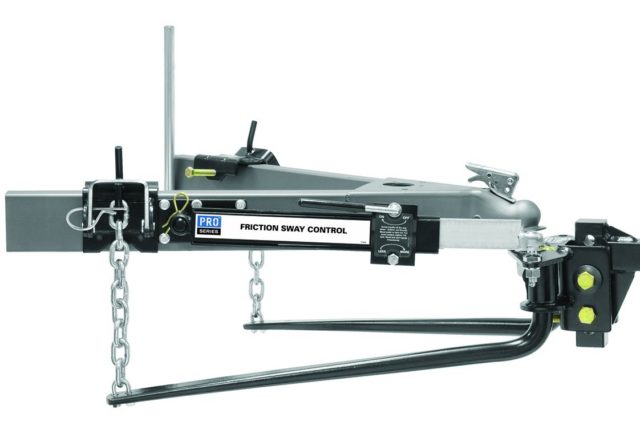Understanding Loading and Weight Distribution

Weights and loads are the biggest single issue facing RVers of all types. Caravans and campers of today are bigger and heavier than they were 30 years ago. The have features like full ensuites, off grid electrical systems and grey water tanks; features that were unheardoff not too long ago. Combined with the need for us to have all ther latest electrical gizmos and other creature comforts and the loads we are towing are significantly larger and potentially dangerous if not distributed correctly. Many people decide to fit a weight distribution hitch to solve many of these loading issues but the story is much more complicated than that. In order to ensure our rigs are safe, we need to have a good basic understanding of the principles and forces at play. This article aims to provide that information
At the most basic level, there are considerations to be made in three areas:
- Manufacturer imposed limitations
- Legal requirements
- Safety and the science of towing
Unfortunately in practice in the Australian market the three have little to do with each other. Safe, legal and within manufacturer limits are three different concepts. In particular, manufacturers discouraging the use of Weight Distribution Hitches (WDH) on their self levelling suspension vehicles are taking no account whatsoever of the third consideration. What is safe is not always legal or within limits, and what is legal is not always safe.
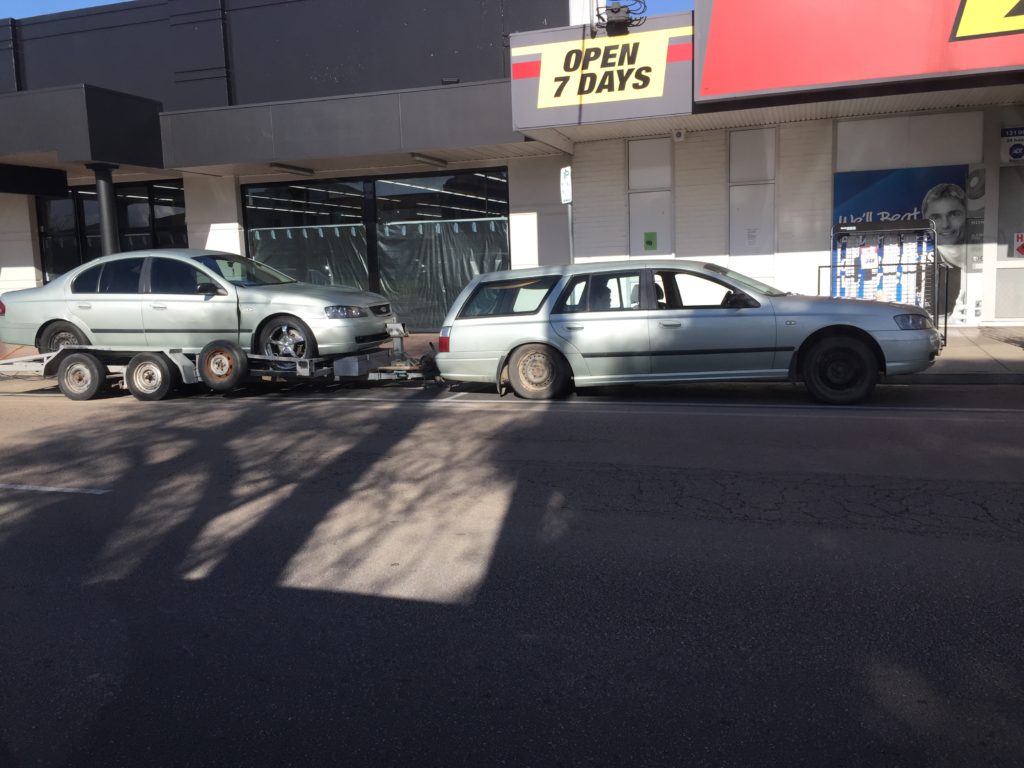
Regardless of the first two, the incontrovertible laws of physics mean that applying a ball load a metre or so behind the fulcrum (rear axle centre line) will leverage weight off the front axle, regardless of suspension type and spring rate. You could replace the suspension with solid blocks and this leverage effect still applies. So there is a safety issue in terms of steering and braking if you don’t do something to address this weight transfer regardless of what it says in the vehicle handbook. Consider the example of towing an 8 foot poptop van with a Kenworth prime mover. Its probably the only clear case where a WDH is not required.
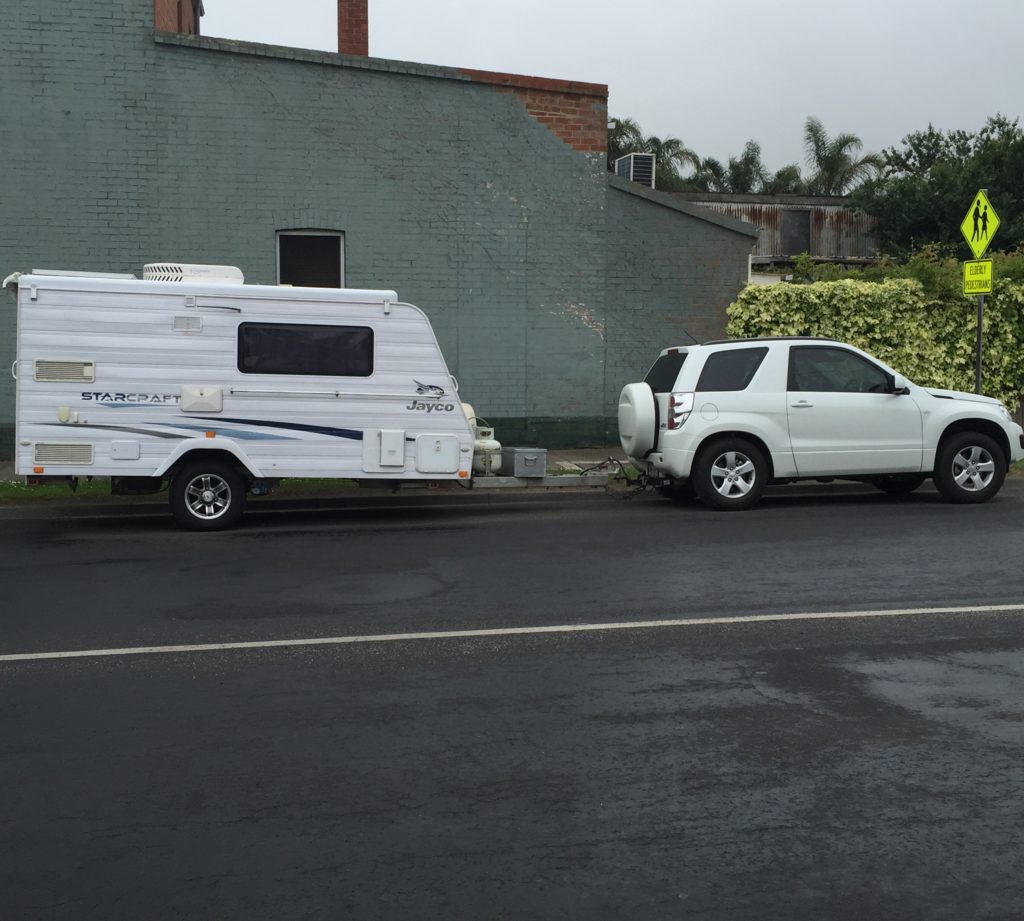
To elaborate, it is fair to say that a small amount of weight off the front would be acceptable but a large amount would not. Where the acceptable limit of weight transfer off the front lies would be very difficult to determine without some significant real world testing. Consequently, the vast majority of rigs out there are will most likely be on the wrong side of this limit without a WDH.
The amount of weight lifted off the front and imposed on the rear is a function of ball weight, rear overhang and wheelbase. The formula is:
(Rear Overhang ÷ Wheelbase) x Ballweight
So with a pretty modest van that only weighs 1,500 loaded, with a 10% ballweight, a tow vehicle with a 2750mm wheelbase and 1200mm overhang (rear axle centreline to centre of ball), the calculation is:
(1200/2750) x 150 = you are lifting 65 kg off the front and applying it to the rear in addition to the ballweight so 215 kg on the rear axle, suspension, wheel bearings, wheels and tyres. That’s going to affect handling, braking and steering and we haven't introduced any passengers of laguage as yet.
Or apply it to your a larger rig of say 2850 wheelbase, 1200mm overhang and 350 kg ballweight.
(1200/2850) x 350 = 147 kg off the front and a total of 497 on the rear, just short of half a tonne! While it might all be within the GVM of the vehicle, it may exceed the weight rating of the rear suspension and tyres? It might feel fine driving without a WDH but the reality is it’s not fine!
In both these cases, no amount of suspension changes, even replacing the springs with solid blocks, will not change this redistribution of weight. All it can do is hold up the same weight higher and maybe crack the chassis.
What is the best trailer hitch lock?
There is, of course, more to stable towing than just this. It’s not just a matter of having adequate ball load. How that is achieved with the loading of the van is also vital to stable towing. The forces acting on a towing situation are total ball mass (TBM) and centre of gravity (CoG) as per the following diagram.
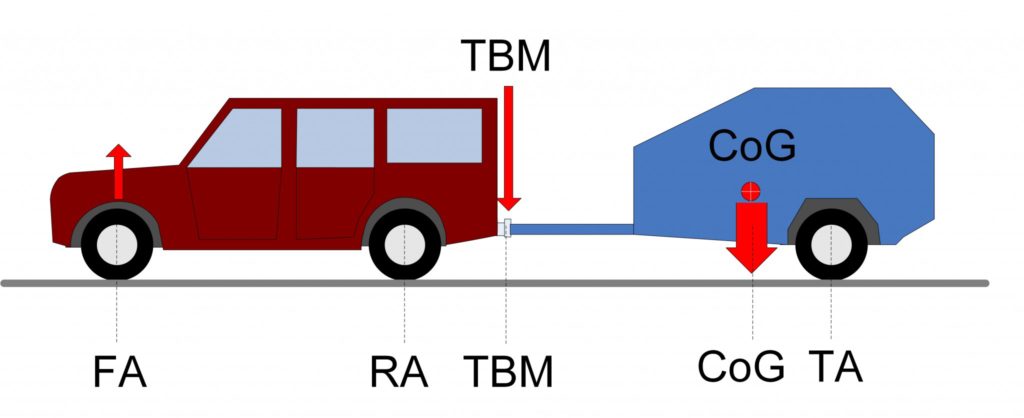
The trailer has a CoG which is ahead of the trailer axle. When you tow a trailer you want it to be dynamically stable, which means that when it is disturbed by something – a gust of wind, a bump in the road – then the trailer returns to its position behind the towcar. The opposite of dynamically stable is unstable, where once disturbed the trailer naturally deviates even further from its original position.
The key to stability is the position of the CoG relative to the axles, which is similar to but not the same as the TBM. The diagrams below make the point:
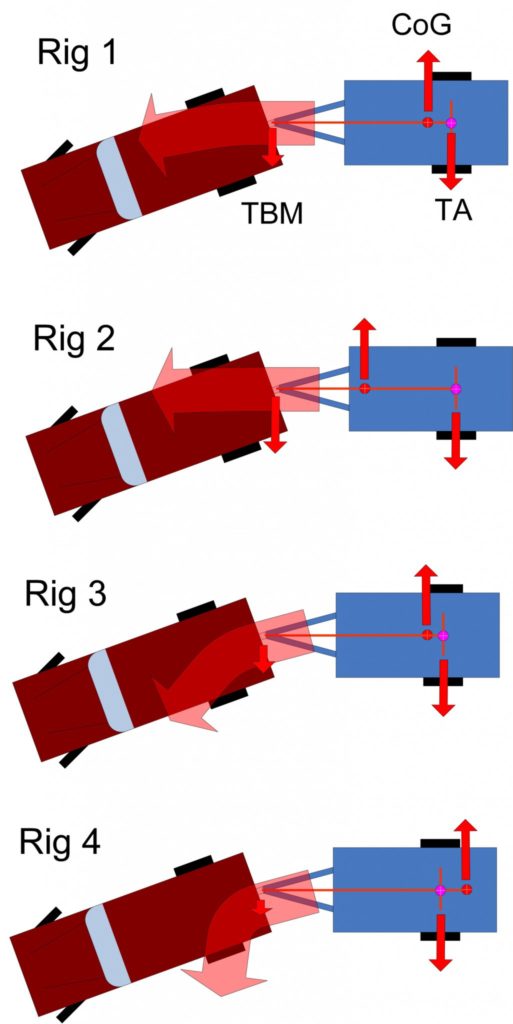
Rig 1 is about right, the trailer is stable. If disturbed, the trailer will return to its place behind the towcar, yet be reasonably easy to manoeuvre.
Rig 2 has the CoG way too far forwards, so the trailer is very stable, but also hard to turn and creating too high a load on the back of the car. Rig 2 would have problems going around corners, the trailer would want to go straight on.
Rig 3 is very easy to turn with a CoG close to the axle, but it’s not a stable trailer, especially at speed. There would be little damping of disturbances, leading to instability of the towcar. But this is a good setup for low-speed offroad work where you want minimal towball downforce, and high-speed stability doesn’t matter.
Rig 4 is totally wrong because the CoG is behind the trailer axle, creating a dynamically unstable trailer where any deviation is magnified.
So TBM is actually the result, not the action.
What’s really important is shifting the CoG further ahead of the axles, and that has a side effect of increasing the towball mass. It is also possible to hugely improve a trailer’s towability without changing its weight or towball mass. It’s all too easy to just increase the TBM to solve stability problems, but there are big risks with that approach.
The more you move the CoG ahead of the axles, the better the straight-line stability. Unfortunately, the TBM also increases, and the greater the TBM, the greater the force on the car, in particular the rear axle. There is a corresponding reduction in weight on the front axle. Bad news for vehicle handling and therefore safety:
So take a 3000kg van. Let’s say we have the major weights represented by black rectangles.

The TBM is a bit low, so you decide to make it closer to the desired 10% by adding or moving weight. Logically, you’d do this by adding weight to front.

Lots of weight at the front and back. But at least the TBM is now within limits.
Unfortunately, you have totally ruined the trailer dynamics. The principle of centrifugal force means that any disturbance to the tracking of the van behind the car leads to it tending to gyrate around the CoG. Here’s the same load better distributed:
 A van with its weight over the axles is a much easier and safer tow than one with the weight at either end of the trailer. A weight-at-each-end tsituation is a nightmare to tow for two reasons, even if the TBM is the same or lower:
A van with its weight over the axles is a much easier and safer tow than one with the weight at either end of the trailer. A weight-at-each-end tsituation is a nightmare to tow for two reasons, even if the TBM is the same or lower:
- it’ll be hard to turn, and when it does turn it’ll be hard to stop turning.
- it will pitch up and down, disturbing the towcar and reducing the ability of the towcar to maintain traction
And here’s a diagram to show how weights at each end make the trailer pitch up and down. Not good at all, as that pitching up and down reduces traction on the rear of the car which can lead to trailer sway.

Weight centralisation should be your goal. The less centralised the weight, the more TBM you’ll need for stability, and the greater the TBM, the more stress on the towcar and less able the towcar is to turn the rig around corners.
If you want a practical demonstration of the effect of trailer weights go to Bunnings and do this.
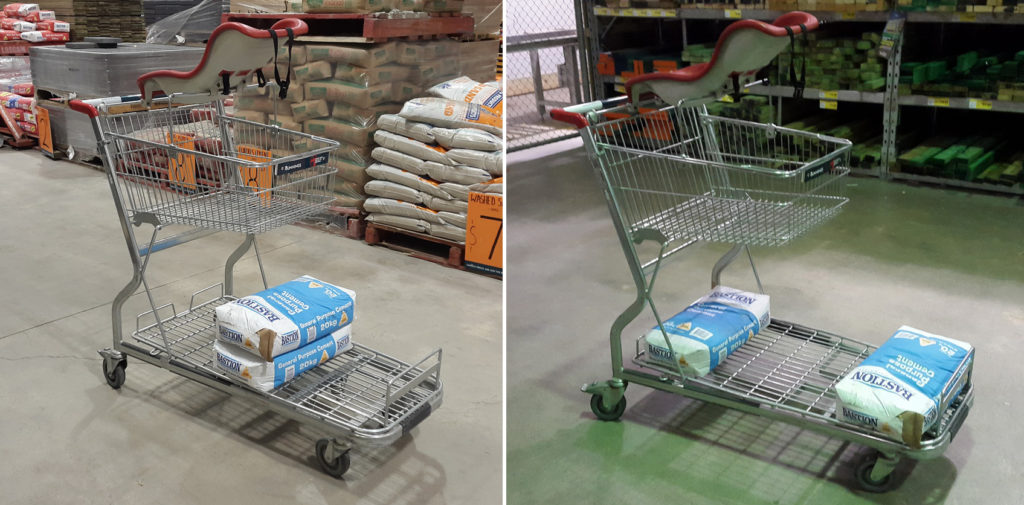
Then push them around corners, and at a brisk pace in a straight line, waggle the trolley. When you’ve finished re-stacking the shelves you knocked over with the second one the point will be made. Bottom line: centralisation of weight is critical, and even more important than total weight. A lighter trailer which is badly balanced may well be worse than a heavy one that is well balanced.
Just for amusement, here’s an example of how you can go too far with a WDH. It’s a front wheel drive Oldmobile Toronado from about ’69 with the rear wheels removed. The WDH has been wound up so high that the rear axel has been lifted clear off the ground permitting forward motion through the front wheels.
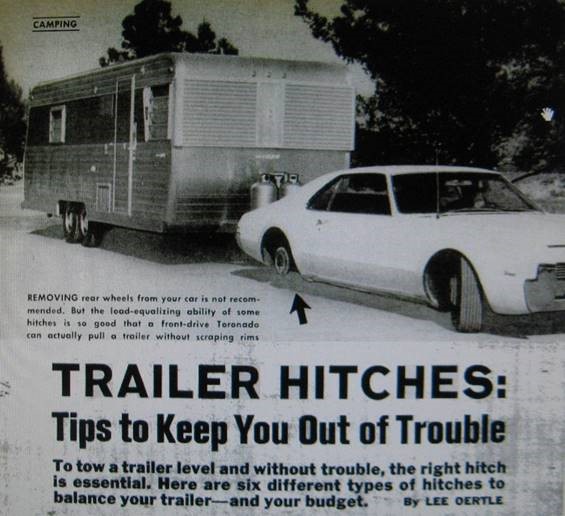
Thanks go to my mate Geoff who put most of this article together for me. Geoff has a lot of caravanning miles under his belt and takes a very practical view of most things.


